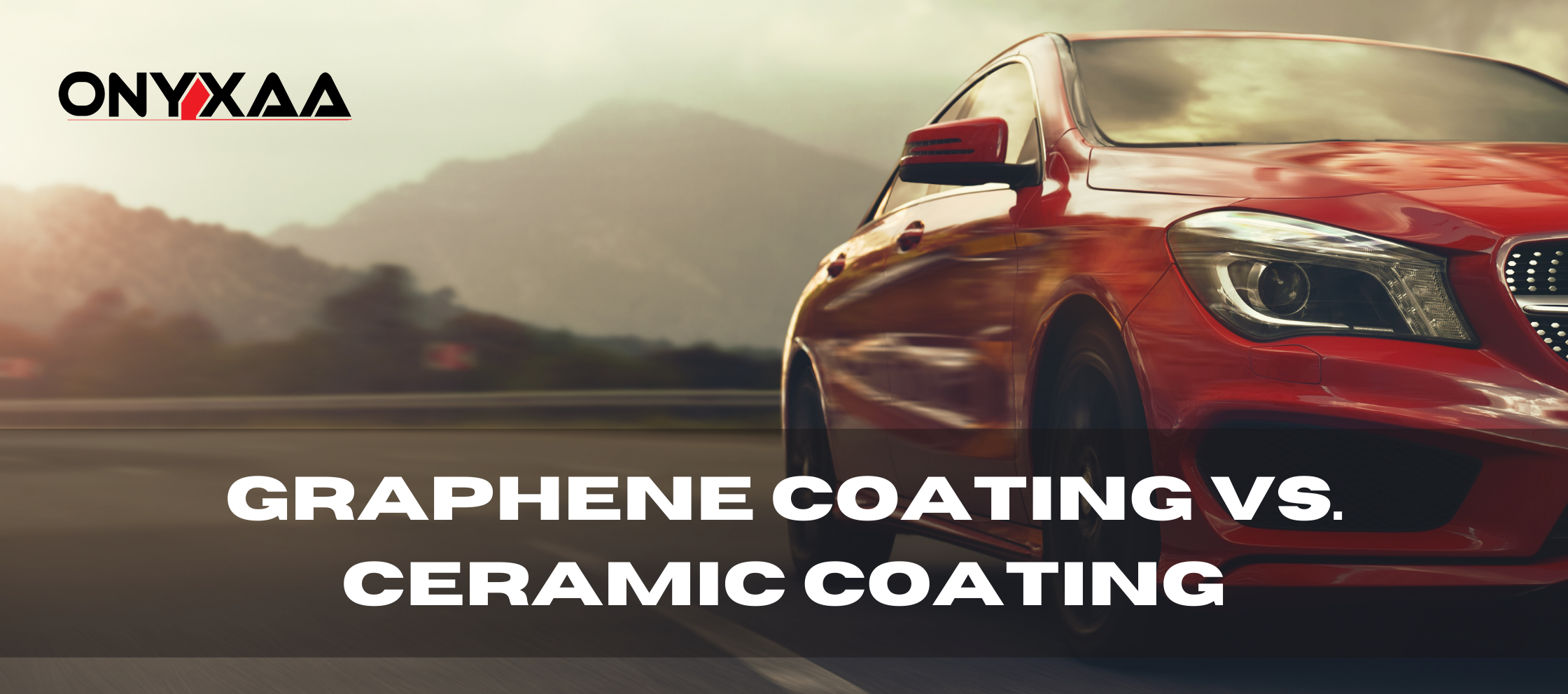Graphene Coating vs Ceramic Coating
Each of us do we feel highly possessive for our cars, and we leave no stone unturned in collecting money to buy our dream cars. The real challenging part comes when we have to maintain our car, and this is where the role of car detailing comes into the picture. On an average,every day, your car’s paint job is exposed to various factors that can lead to rusting and other issues. You can choose from a variety of coating options. Graphene and ceramic are two of these materials. But what’s the difference between graphene and ceramic coating? So, to find out, keep reading!
What is graphene coating?
Graphene coatings are the most recent technological breakthrough in the automotive detailing industry. If you use social media regularly, you’ve probably noticed a significant rise in advertisements for graphene products. This carbon-based nanomaterial isn’t entirely new; it was discovered by a couple of British professors a long time ago. Fast forward to today, and graphene is gaining traction as a major brand in many detailing circles.
What is Ceramic Coating?
Silicon dioxide, or silica, is used in ceramic coatings and is mostly obtained from quartz crystals. They’re mixed with various other chemicals to make a liquid that, when applied to a car and allowed to cure, forms a clear, hard finish. Many manufacturers now sell different grades of ceramic coating, which weekend warriors or skilled professionals can apply after introducing the first ceramic coating.
Graphene Coating vs Ceramic Coating
Now that we’ve covered the basics of ceramic and graphene coatings, let’s see how they stack up in the following categories:
The Advantages of Graphene Coating
So, with all of that in mind, let’s take a look at the advantages and see if the two vary. The graphene coating comes first. There are some parallels to be found. It’s made to help minimize water spots while still protecting against corrosion. It has a nice gloss and is hydrophobic.
But, aside from those and the coating’s durability, there are a few advantages to the ceramic choice. When it comes to water spots, the graphene coat is less likely to cause the problem. In comparison to ceramic, the application phase is often much simpler.
When it comes to longevity, though both solutions have a good time delay, graphene might be a little more robust. In addition, the graphene coating aids in the reduction of heat absorption. Graphene also has a few advantages, including Improved slickness, Abrasion resistance and a gleaming appearance
The Advantages of Ceramic Coating
Although ceramic coating falls short in a few areas where graphene coating excels, it still has many advantages that make it a viable choice. Before we get into those, let’s take a look at some of the places where this coating falls short.
Unlike the graphene coating, the ceramic coating will not protect against scratches or swirls. It also does not aid in the prevention of water spots, which graphene excels at. This coating choice shines when it comes to shielding the paint from fading caused by the sun’s rays. It accomplishes this by preventing oxidation in the sun.
When it comes to chemical stains, it also fits well. Acidic contaminants from the air cause these stains to form on the car. Since ceramic is hydrophobic, it will prevent this from occurring.
This improves the consistency of the beading as well as the cleaning process. In reality, a quick spray with the hose might result in a gleaming vehicle.
The candy gloss is the final value, and it varies slightly from graphene. This look not only adds a nice sheen to the paint job but can also intensify the hue. These are just a few of the advantages of ceramic coating.

Last Thoughts
We looked at graphene and ceramic as two of the better coating choices.
Each of these coatings has its own set of advantages and disadvantages. When it comes to longevity, ceramic has a better track record. It even protects you from the sun’s UV rays. On the other hand, Graphene coating can last longer and aid in beading, as well as providing scratch protection.
In terms of cost, graphene is far more expensive than ceramic coatingbut it is easier to apply, especially if you plan to do it yourself. So, in the end, the difference isn’t that important, and the car owner should have an easier time choosing between the two.
We hope that this in-depth look at all of the distinctions and all of the additional details will assist you in making a more informed and less stressful decision. There’s no need to let your fear get the best of you. Regardless of which option you select, you can have a sleek car and free from the contaminants and elements found in the air and your daily lives.

